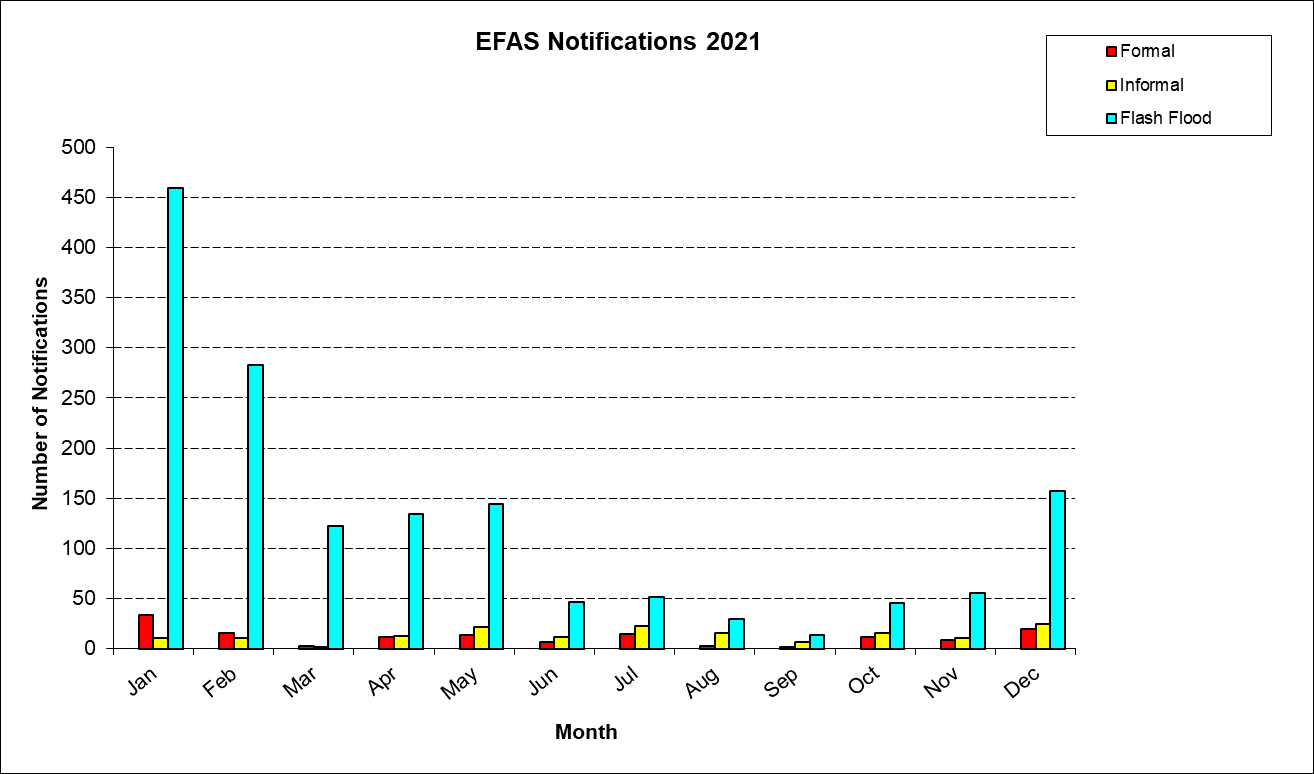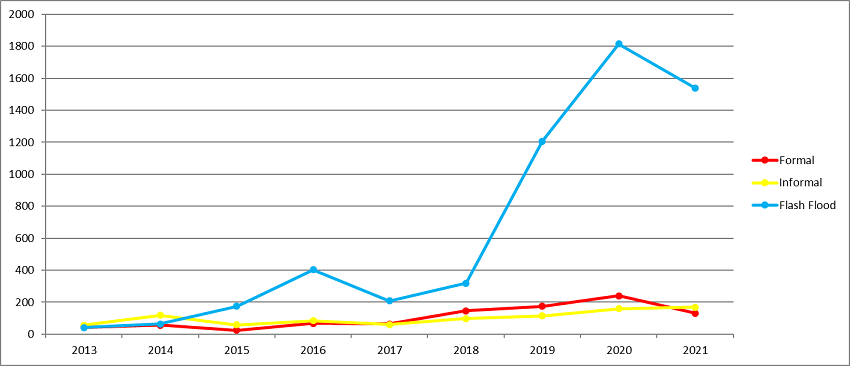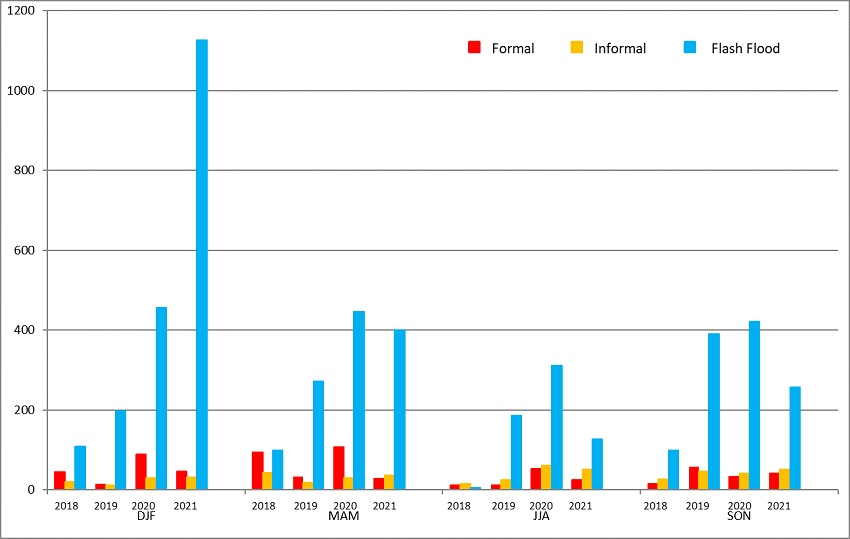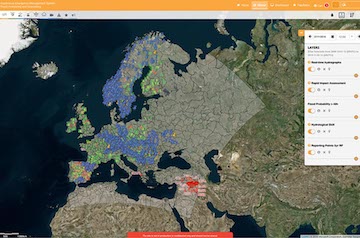
The Summary of EFAS Notifications in 2021 and comparison with previous years
by Eric Sprokkereef (RWS)
Figure 1 shows the number of formal, informal, and flash flood notifications issued each month throughout 2021. With a total number of 1856 EFAS notifications in the year 2021 the amount of notifications decreases by about 16% compared to the previous year. However, the year 2021 still ranks second in terms of the highest number of notifications, which is due to the last number of flash flood notifications issued. When compared to 2020, the EFAS Dissemination Centre (DISS) issued 39% less formal, 6% more informal and 15% less flash flood notifications. January was the most active month with 504 notifications, which is about 27% of the annual sum for 2021. January also saw the highest number of formal notifications, whereas the months August and September were relatively quiet in terms of flood notifications. In total, 147 formal, 169 informal, and 1540 flash flood notifications were issued in 2021.
Remarkable periods in 2021 were: (i) the beginning and the end of January with floods in Italy, Albania, Greece, Bulgaria, and the Danube basin, (ii) in April and May with floods in the Russian Federation, and (iii) early July with wide spread floods in the French, Luxembourg, Belgian, German, and Dutch parts of the Rhine and Meuse basins. This event is also subject of a detailed assessment that will be published early 2022.
For comparison, Figure 2 indicates the total number of EFAS notifications per year for the past 9 years. 2021 was relatively ‘normal’ for formal and informal notifications. The number of flash flood notifications decreased slightly compared to 2020. In January and February, the number of issued flash flood notifications was still quite high. We note that in mid-February the criteria for issuing flash flood notifications were modified. This has led to a clear decrease in the number of flash flood notifications issued from February onwards.

Figure 3 breaks down the number of notifications over the past 4 years into seasons (December, January, and February [DJF]; March, April, and May [MAM]; June, July, and August [JJA]; and September, October, and November [SON]).
The most active seasons in terms of river flooding over the past 3 years were all beaten by the winter season of 2021. The reason for that is the amount of flash flood notifications that has been issued in the months January and February in 2021. If one only looks on formal and informal notifications, then the most active seasons were winter 2020, spring 2018, summer 2020, and autumn 2019.

Based on the number of notifications issued from 2018-2021, the most formal flood notifications are issued in spring (66 per year on average), the most informal flood notifications in autumn (39 per year on average) and the most flash flood notifications in winter (473 per year on average). The figure for flash flood notifications is distorted due to the adjustment of the issuance criteria from February 2021.The season with the lowest amount of formal notifications is the summer (26 per year on average).
In 2021 in total 39 countries received 1856 notifications (147 formal, 169 informal, and 1540 flash flood notifications). Romania received the highest number of notifications (3 formal, 10 informal, and 135 flash flood notifications). The highest amount of formal notifications has been sent to the Russian Federation (23), followed by Greece (21). The highest amount of informal notifications was also sent to the Russian Federation (18), followed by France (16), and the highest amount of flash flood notifications to Romania and Bulgaria (135 and 134 respectively).
In 2020 EFAS DISS has started with the analysis of the results from the floodlist information system (https://floodlist.com/) on an operational basis, using the Global Reporting Tool (GRT). Reported flood situations for large river basin throughout the world are analyzed once a week. Verified information is released for publication on the Global Disaster Alerting Coordination System (GDACS; https://www.gdacs.org/) that is used by the UN and the EU to coordinate disaster relief actions. In total 914 flood reports have been verified and released for publication in GDACS by EFAS DISS in 2021. 152 events occurred in Africa, 299 in Asia, 162 in Europe, 130 in North America, 144 in South America, and 27 in Australia and Oceania.

